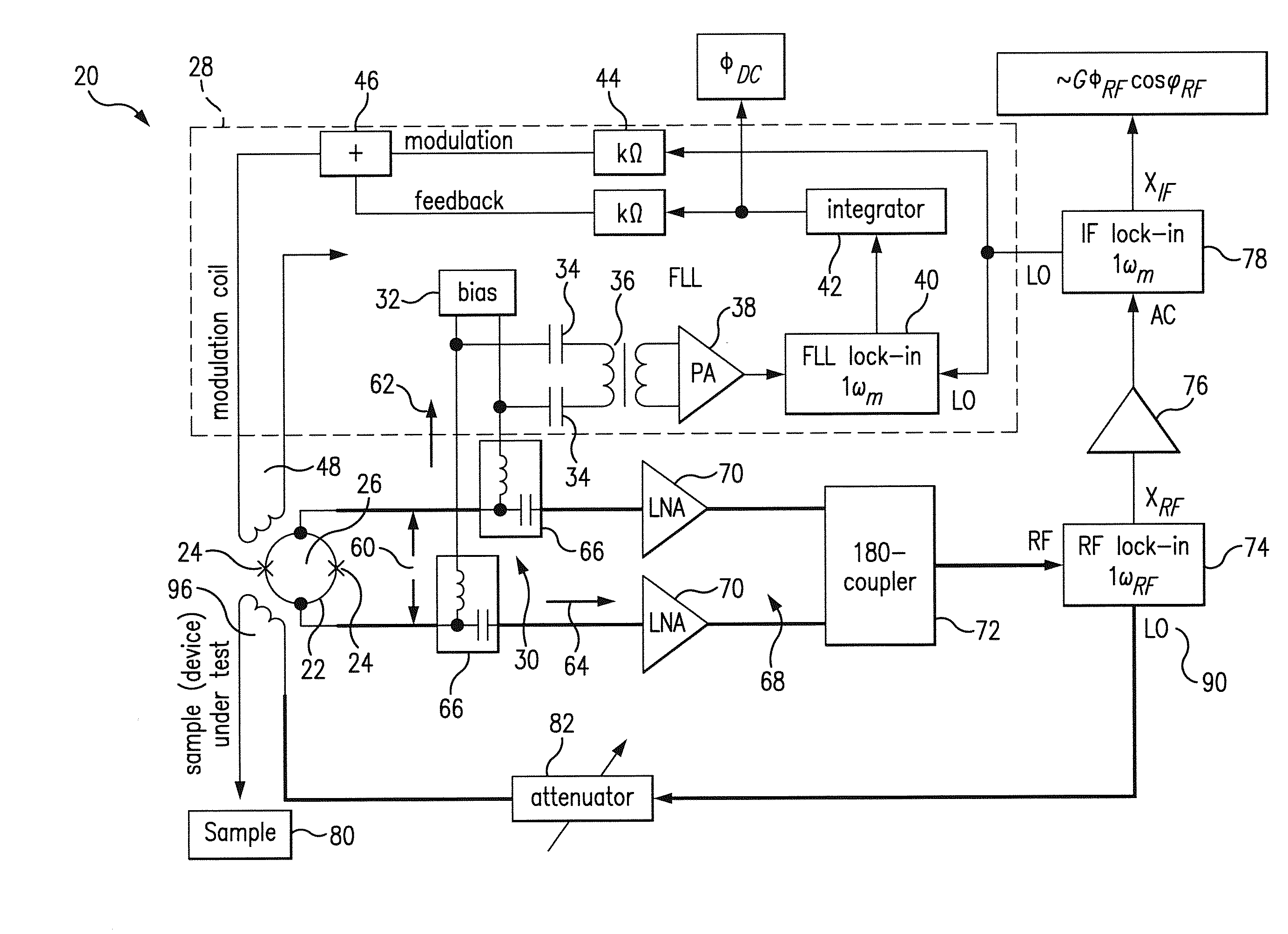DC squid based RF magnetometer operating at a bandwidth of 200 mhz and higher
a rf magnetometer and squid technology, applied in the field of magnetic measurements, can solve the problems of affecting the signal integrity and detectability, affecting the application of capacitive and/or inductive near-field coupling of squids, and open loop operation
- Summary
- Abstract
- Description
- Claims
- Application Information
AI Technical Summary
Benefits of technology
Problems solved by technology
Method used
Image
Examples
Embodiment Construction
[0050]The ultimate goal of the present invention is to employ DC SQUID to create an output signal (IF signal, to be discussed in details in further paragraphs) that is a measure of RF magnetic field emanating from a sample of interest. Since the SQUID intrinsic bandwidth maybe as high as hundreds of GHz, the SQUID itself is not presenting a limiting factor. But the RF field oscillates at frequency which falls outside the FLL (flux-locked loop) bandwidth, i.e. higher than 20 MHz. For this reason, the flux-locked loop typically used in conjunction with DC SQUIDs will not respond to the measured RF field.
[0051]In order to overcome the FLL bandwidth limitation, the low frequency FLL is provided with the function of simultaneously locking the static flux for the DC SQUID as well as creating the AC bias for the RF flux at the maximum slope of the V-Φ function of the DC SQUID.
[0052]In the subject magnetometer, the RF flux emanating from the sample under study is superimposed on top of the ...
PUM
 Login to View More
Login to View More Abstract
Description
Claims
Application Information
 Login to View More
Login to View More - R&D
- Intellectual Property
- Life Sciences
- Materials
- Tech Scout
- Unparalleled Data Quality
- Higher Quality Content
- 60% Fewer Hallucinations
Browse by: Latest US Patents, China's latest patents, Technical Efficacy Thesaurus, Application Domain, Technology Topic, Popular Technical Reports.
© 2025 PatSnap. All rights reserved.Legal|Privacy policy|Modern Slavery Act Transparency Statement|Sitemap|About US| Contact US: help@patsnap.com



